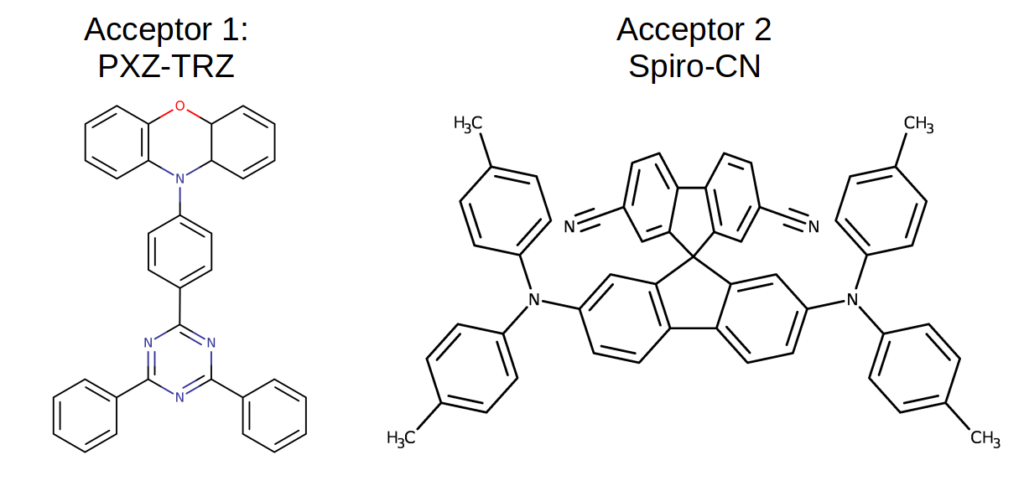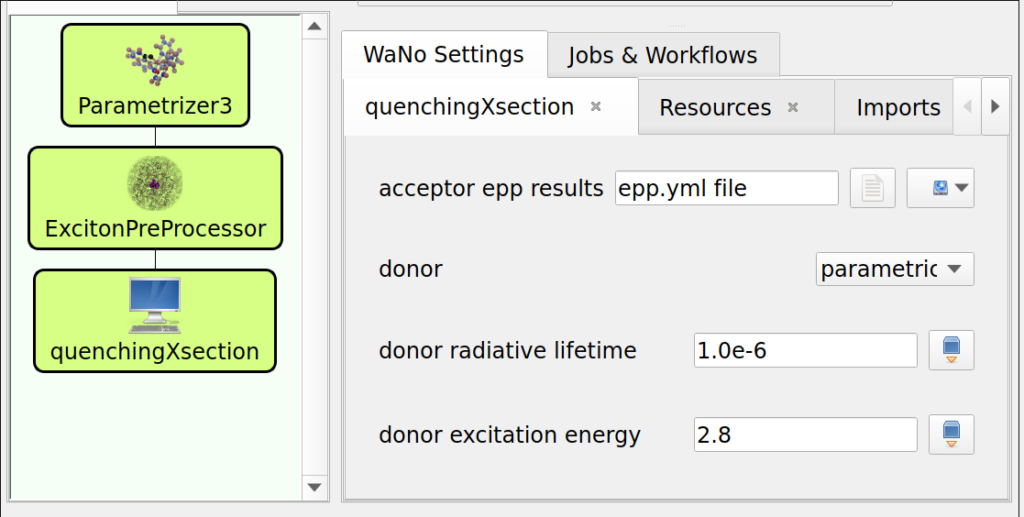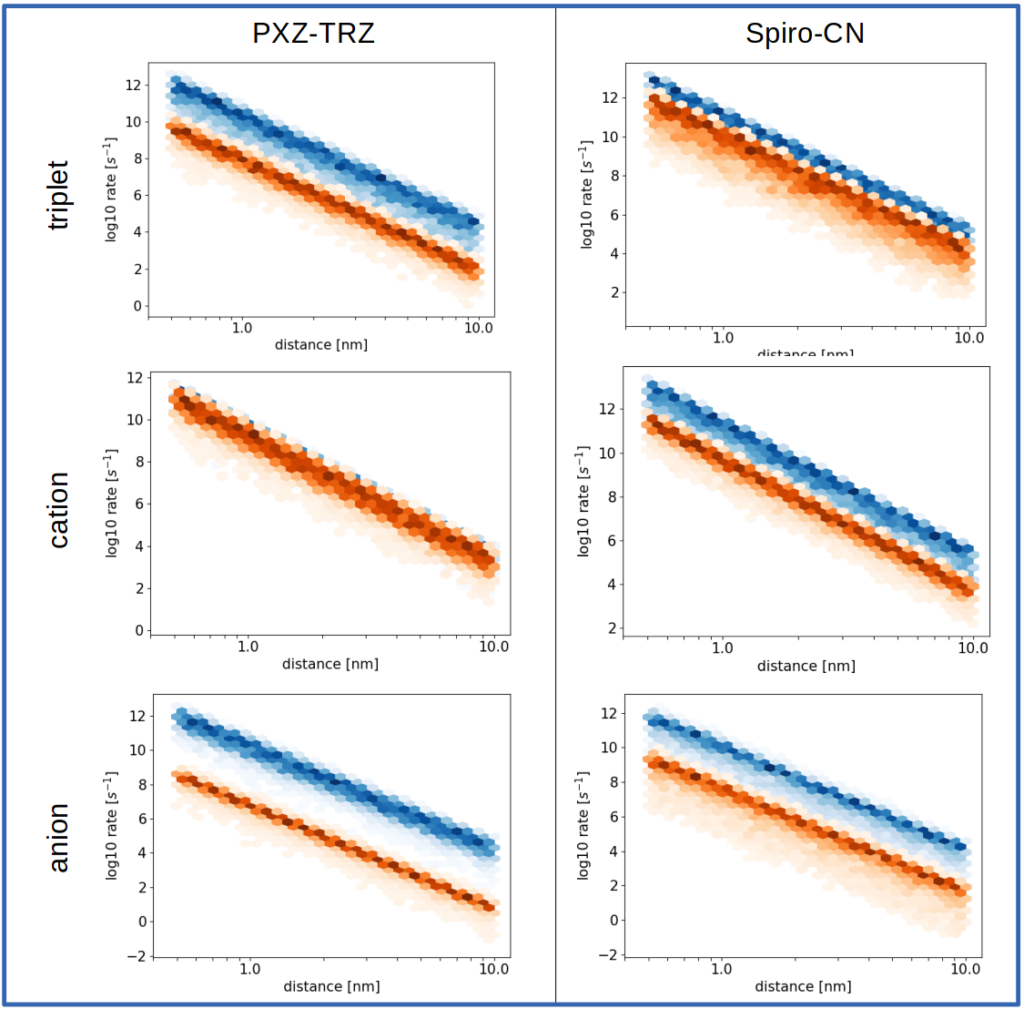Long range exciton quenching processes through energy transfer from an excited molecule onto another charged or excited molecule, limit device efficiency and lifetime of OLEDs. Especially in the design of co-emission systems with three or more materials, the choice of well-balanced materials is challenging. To support R&D efforts in the identification of suitable material pairings, we developed a simulation approach to assess the affinity of OLED materials to act as acceptor material for exciton-polaron-quenching (SPQ/TPQ) or exciton-triplet-annihilation (STA/TTA) in a given setup.
In this study we use this workflow to compute distance dependent quenching rates of the two TADF emitters PXZ-TRZ and Spiro-CN (energy acceptors) when paired with a specific donor material. Their structures are depicted below.

For both emitters we executed the following workflow:

- We use TD-DFT via the Parametrizer module to tune range-separated functionals to match S1 excitation energies to ADC(2) computations.
- Using the tuned range-separated functional from step 1, we compute the excitation spectrum of the acceptor molecules in the anionic, cationic and triplet state in the ExcitonPreProcessor module.
- Based on these spectra we then calculate distance dependent quenching rates for a donor molecule with specific radiative lifetime and excitation energy.
Resulting rates are depicted below. In step 3 of the above workflow we computed quenching rates either strictly following Marcus theory, resulting in a lower bound (orange dataset) or using Marcus theory but with resonance for all transitions with a negative energy change for an upper bound (blue dataset). These transitions with negative energy change require are suppressed when strictly following Marcus theory. For triplets (top panels) quenching rates are smaller for PXZ-TRZ than Spiro-CN, especially the lower bound. For cations, PXZ-TRZ shows similar lower bound, but smaller upper bound rates compared to Spiro-CN. For anions, PXZ-TRZ rates show a reduced lower pound in comparison to Spiro-CN.

We note that the rates depend on the number of excitations and their transition dipole in the acceptor resonance window for a given donor energy. While in this case quenching rates were computed only for a single (parametric) donor molecule, specified by its excitation energy and radiative lifetime, this approach can be used to efficiently scan the affinity of acceptor molecules for different donors parameters. This enables the identification of donor excitation energy ranges where the acceptor is insensitive to exciton quenching, thereby aiding the search for suitable pairings of molecules in emission systems.